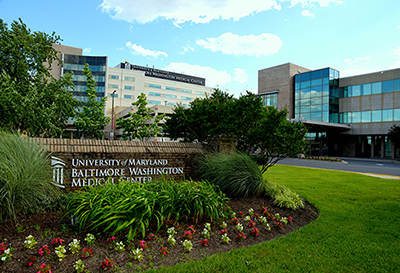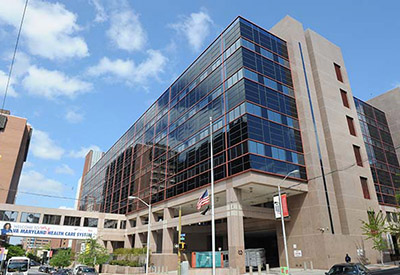Second Year Rotation - Vascular Surgery Fellowship

Baltimore Washington Medical Center (BWMC)
This 285 bed University of Maryland Medical System community hospital located in Glen Burnie Maryland has a vascular service that runs as a private teaching facility in most aspects. The Vascular Center has four full-time vascular surgeons and three vascular NPs. There is a wonderful suite including a vascular lab, clinic, and conference space.
The OR has a hybrid room, with 1-2 rooms running all day, five days a week for an annual case volume of over 800. There are weekly teaching pre-op conferences, in addition to the conferences at UMMC. You run the service with a mid-level general surgery resident and participate in all procedures (and clinic, as time allows).
Baltimore Veterans Affairs Medical Center

The Baltimore VA is located across the street from the UMMC Downtown Campus and is connected directly by a pedestrian bridge. The vascular service is covered by UM School of Medicine faculty. You run the service (with two interns) and maintain continuity of care. There are four full operative days, cath lab experience and one full day of clinic.
Two mid-level providers assist with outpatient service management. You run a preoperative conference and influence the case mix and selection during your time. Cases include lower-extremity bypasses and endovascular revascularizations, venous ablations, HD access and fistulograms, carotid endarterectomies and stents, and EVARs, among others.
University of Maryland Medical Center Downtown Campus
UMMC Downtown is arguably the busiest service that you rotate on, providing an unparalleled variety of high-acuity patients and case mix. Consults from the Shock Trauma Center are also covered during this rotation. There are seven faculty members primarily staffing UMMC Downtown and Shock Trauma.
The service is very busy; two junior residents, a senior resident, and two mid-level providers work during the day, and a dedicated intern at night make up the team. You manage the service, run the team, and distribute the residents to cases.
You experience the most challenging vascular cases and some of the most cutting-edge techniques you could see anywhere. You work with cardiac surgery in joint procedures, assist with anterior spinal exposures, and respond to intraoperative emergencies throughout the hospital. Conditions treated include thoracoabdominal aortic aneurysms, open AAAs, trauma and complex TEVARs abound, including re-do and infected fields, mixed in with upper- and lower-extremity ischemia, cerebrovascular disease, and deep venous space cases.
